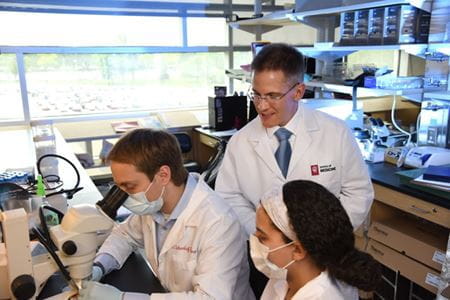Stark Neurosciences adds to its research interests
Ben Middelkamp Mar 17, 2021

Tim Corson, PhD, works with medical students doing research in the lab.
Author
Ben Middelkamp
Ben Middelkamp is the communications manager for Stark Neurosciences Research Institute at Indiana University School of Medicine. Before joining the Office of Strategic Communications in December 2019, Ben spent nearly six years as a newspaper reporter in two Indiana cities. He earned a bachelor’s degree in Convergent Journalism from Indiana Wesleyan University in 2014. Ben enjoys translating his background in journalism to the communications and marketing needs of the school and its physicians and researchers.
The views expressed in this content represent the perspective and opinions of the author and may or may not represent the position of Indiana University School of Medicine.